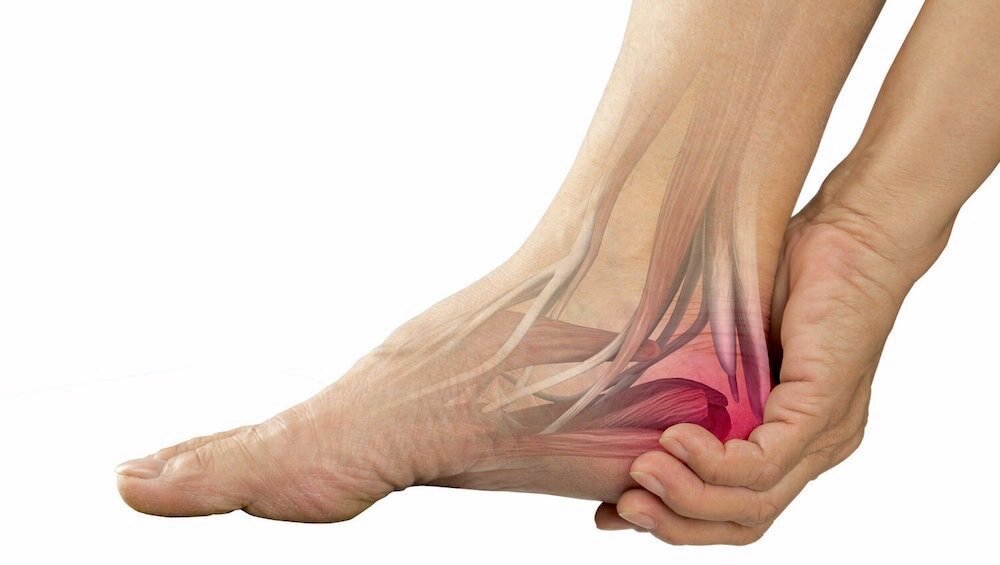Peroneal, Tibial & Achilles Tendonitis Specialist
According To Dr. Nelya Lobkova
Tendons in the lower extremity are the cord-like structures that attach muscles in the leg to bones in the foot and ankle. Foot and ankle tendons take on much of the forces applied during activity, thus these tendons in particular are prone to irritation and inflammation when excessive repetitive forces are applied. Tendonitis in the foot and ankle can present as pain and swelling below the knee and commonly presents after running, jumping, biking, skating, and even walking. The multifactorial causes include overuse injuries, trauma, and inflammatory medical conditions. It is important to anatomically isolate the affected tendon in order to effectively diagnose and treat foot and ankle tendinitis. At Step Up Footcare, Dr. Lobkova has the expertise and technology available to get you moving again pain-free. Book a visit with NYC's top Podiatrist and foot & ankle tendonitis specialist, Dr. Nelya Lobkova at Step Up Footcare in our TriBeCa Downtown NYC location to have your tendonitis expertly treated.
What are the symptoms of tendonitis in the foot and ankle?
It is common to develop pain in the foot and ankle during high impact activities or sports, such as running, due to faulty mechanics and the tremendous amount of force placed on the feet during these activities. Symptoms of foot ankle tendonitis include but are not limited to pain, swelling, redness, warmth, tingling or burning sensation, or tightness. These symptoms appear along the affected tendon where there is a strain, tearing, or thickening of the tendon.
What types of foot and ankle tendonitis are there?
The common types of foot and ankle tendonitis are:
Achilles Tendonitis: Pain along the back of the foot.
Peroneal Tendonitis: Pain along the outside of the foot or ankle.
Anterior Tibial Tendonitis: Pain over the top of the foot or ankle.
Posterior Tibial Tendonitis: Pain along the inside of the foot or ankle.
Extensor tendonitis: Pain over the top of the foot or ankle.
Flexor Tendonitis: Pain on the bottom of the foot or the inside of the ankle.
Will the tendonitis in the foot and ankle go away on its own?
Typically, foot and ankle tendonitis will not go away on its own. Before seeing a specialist, it is important to stop all lower body activities, ice and elevate the affected extremity and then seek an appointment with a specialist, such as Dr. Lobkova.
What is the treatment for tendonitis of the foot and ankle?
Successful foot and ankle tendonitis treatment involves a strict protocol tailored to each person individually, based on tendon elasticity, foot type or foot structure, activity levels, and footwear. Below are the non-invasive and minimally invasive treatment options which may be prescribed individually or in combination.
Immobilization: Immobilization involves temporarily decreasing the mobility of an injured or inflamed tendon to allow for proper healing by wearing a walking boot, rigid shoe, or brace.
Advanced Laser Therapy: Non-invasive Laser Therapy stimulates the body’s own ability to restore function, reduce swelling, inflammation and pain in the foot and ankle while accelerating the healing process of tendonitis in the foot and ankle.
Kinesio Taping: Kinesio tape (KT tape) is a special type of elastic tape that is applied on the skin to reduce pain and swelling and increase blood flow and recruit our body’s healing cell components.
Custom Orthotics: 3D Gait Analysis and Custom Orthotics may identify and solve faulty biomechanics and inadequate support that may be the cause of foot and ankle tendonitis, eliminating pain and facilitating a quicker return to sports activities.
Injection Therapy: In certain cases, especially chronic tendonitis (present for longer than 6 months), regenerative medicine injections are highly effective in boosting healing potential and stimulating our body’s repair response.
Minimally Invasive Repair: A minimally invasive ultrasonic procedure designed to surgically remove damaged and scarred tendon. Requires 1-2 stitches and minimal downtime.
It is important to note that depending on the severity and acuteness of the foot and ankle tendonitis, treatment may span from 4 weeks to 6 months. Progress is carefully monitored by Dr. Lobkova using diagnostic imaging and follow-up care. Start the conversation at Step Up Footcare today.



